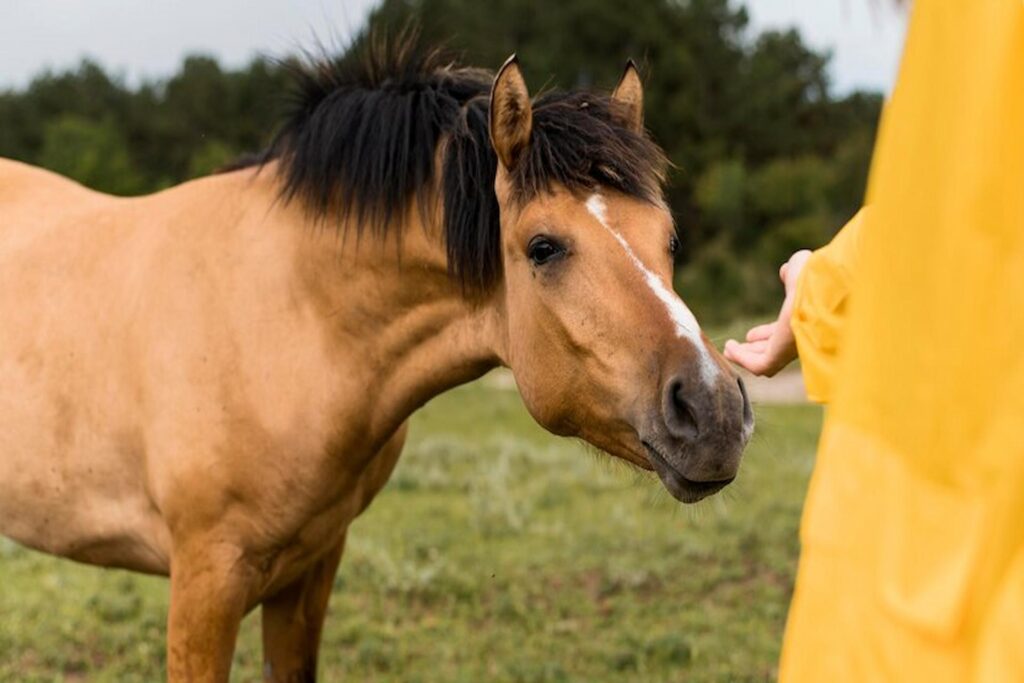Equine Gastric Ulcer Syndrome (EGUS) is a common yet often misunderstood ailment affecting horses of all breeds and disciplines. Equine Glandular Gastric Disease (EGGD), often referred to as glandular ulcers, is a disease affecting the horse’s stomach that can be particularly hard to treat. It should now more accurately be described as an inflammatory disease rather than ulcers.
An endoscopic examination or gastroscopy is the only way to definitively diagnose ulcers but the following symptoms may be indicative of ulcers and mean you should be discussing the situation with your vet:
- Recurrent mild colic that seems to resolve without veterinary intervention
- Reluctance to go forward when ridden, particularly if this is not normal for your horse
- Limited appetite
- Reduced appetite
- Poor condition and weight loss
- Starting or worsening of wind-sucking and/or cribbing
- Biting when being girthed
Behavioural Changes
Alterations in behaviour can be early indicators of underlying pain and discomfort. Subtle changes in temperament, such as increased irritability or reluctance to work, may signal distress caused by gastric ulcers in horses. A once-eager horse may become lethargic or display resistance during training sessions, indicating discomfort exacerbated by physical exertion.
Owners and caretakers should also remain vigilant for changes in social behaviour within the herd dynamic. Horses with ulcers may behave differently in the social hierarchy potentially becoming withdrawn if experiencing significant pain or displaying heightened aggression or dominance if hungry because they aren’t eating as much. Recognising these shifts in social dynamics can provide valuable insights into an individual horse’s well-being and prompt further investigation into the possibility of gastric ulcers or another underlying health problem.
Performance Issues
Gastric ulcers can significantly impact a horse’s performance, manifesting as subtle yet consequential deviations from their usual capabilities. Performance-related behavioural changes can range from decreased enthusiasm during exercise to outright refusal to perform certain tasks. A normally cooperative mount may begin to exhibit signs of resistance, such as bucking, rearing, or evading cues, particularly when asked to work in a collected frame.
Furthermore, changes in posture and movement patterns can offer valuable clues regarding underlying gastric discomfort. Observing irregularities in gait, such as shortened strides or unevenness in movement, can also point towards discomfort which may originate from the gastrointestinal tract or somewhere else. By closely monitoring these performance-related behavioural changes, riders and trainers can take proactive measures to address potential gastric ulceration or other causes of pain and optimise the horse’s well-being and athletic performance.
Dietary Changes and Appetite
Horses suffering from gastric ulcers may exhibit changes in their feeding behaviour. A horse who enjoyed their food may become hesitant or reluctant to consume meals which can exacerbate gastric discomfort.
Dietary aversions or preferences may develop as a coping mechanism for stress and gastrointestinal discomfort. Some horses may show fewer signs of stress when turned out to pasture, whereas others may seem happier in the stable. Assessing your own horse’s response to different environments will help to determine the most appropriate regime to minimise their stress levels.
Listening to Your Horse
In equine health and welfare, behavioural cues are invaluable signposts guiding us towards a deeper understanding of the horse’s internal state. When it comes to the diagnosis and management of gastric ulcers, recognising changes in equine behaviour can provide crucial insights that might lead a horse owner to seek veterinary diagnosis. By remaining attuned to the nuances of temperament, performance, and grooming habits, owners, trainers, and veterinarians can work collaboratively to identify and address gastric ulcers in their early stages, to support the health and happiness of our equine companions.
Read more: https://clarejon.com/bookkeeping-tasks-to-outsource-for-all-businesses/

